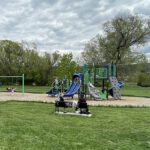Home »

Local results of BC Adolescent Health Survey released
The McCreary Centre Society last week released the East Kootenay regional results of the 2018 BC Adolescent Health Survey. The survey was completed by over 38,000 of the province’s Grade 7–12 students, including the Southeast Kootenay and Rocky Mountain school districts and Kootenay Lake School District.
 Results showed that East Kootenay youth remain more physically active than youth across the province, including 24% who participated in extreme sports on a weekly basis, compared to nine per cent across B.C. Also, local youth were more likely than their peers across the province to have met Canadian physical activity recommendations.
Results showed that East Kootenay youth remain more physically active than youth across the province, including 24% who participated in extreme sports on a weekly basis, compared to nine per cent across B.C. Also, local youth were more likely than their peers across the province to have met Canadian physical activity recommendations.
However, mental health and vaping rates provide some cause for concern, as McCreary’s Executive Director Annie Smith explained: “A quarter of East Kootenay youth had seriously considered suicide and almost one in five who needed mental health services did not receive them. This is obviously worrying as were the findings that 29% had vaped with nicotine in the past month.”
Smith added, “The local results for East Kootenay also confirm what we see across the province in that youth who have supportive adults in their family, school and community report more positive mental health and are less likely to engage in risky substance use, and that gives us some clear direction as to how we can support young people growing up here.”
Positive local trends included increases in East Kootenay youth reporting feeling connected to their community, having an adult in their community they could turn to for help when they had a problem, and decreases in local youth binge drinking.
A copy of the report, Balance and connection in East Kootenay: The health and well-being of our youth, can be obtained at www.mcs.bc.ca.
The 2018 BC Adolescent Health Survey was conducted in 58 of B.C.’s 60 school districts and is the sixth time students have been asked to complete the comprehensive health survey since 1992.
Participation was the highest since the survey began, and the results are considered representative of over 95% of mainstream school students in Grades 7–12 in the province.
East Kootenay HSDA is comprised of Southeast Kootenay, Rocky Mountain and Kootenay Lake school districts. All three districts have participated in the survey since 2003, and two of the three have participated in all six waves of the survey.
The survey provides essential information about health trends, and about risk and protective factors that can influence young people’s healthy transitions to adulthood.
The 2018 survey included 140 questions asking youth about their perceptions of their current physical and mental health, their engagement in health promoting and health risk behaviours, and about factors that can contribute to a healthy transition to adulthood.
Some key findings from the report:

East Kootenay youth are becoming increasingly diverse with a decrease in the percentage of youth of European heritage and increases in those of East Asian descent and in students born outside of Canada (12% vs. four per cent in 2008).
Around a third (32%) of local youth had at least one health condition or disability. This was a local increase from 28% in 2013. More than four in 10 (42%) reported that their condition prevented them from doing things their peers could do.
Reflecting the provincial picture, there was an increase in local youth with a mental health condition. For example, 25% reported they had anxiety disorder/panic attacks, compared to nine per cent in 2013. There was also an increase in youth who missed out on needed mental health services in the past year (from 11% in 2013 to 19%).
One in five (20%) of local students had seriously considered suicide in the past year, and eight per cent had attempted suicide.
Just over half (52%) of students got eight or more hours of sleep on the night before taking the survey, and 42% went offline after their expected bedtime (e.g., turned off their phone or put it in silent mode).
 Youth in East Kootenay were more likely than their peers across the province to have suffered a concussion in the past year (17% vs. 13%). However, only around half (52%) of these youth received medical treatment for their concussion.
Youth in East Kootenay were more likely than their peers across the province to have suffered a concussion in the past year (17% vs. 13%). However, only around half (52%) of these youth received medical treatment for their concussion.
Local students were more likely than their peers across B.C. to have lost someone close to them as a result of an accident (19% vs. 13%) and suicide (14% vs. nine per cent). Also, 25% had a family member or close friend who had attempted or died by suicide in the past year (compared to 20% provincially).
Seven percent of East Kootenay students with a phone had used it on their most recent school day to engage in sexting (a decrease from 15% in 2013), and nine per cent used their device to watch pornography.
Similar to results in 2013, 57% of students had tried alcohol, 33% had used marijuana, and 23% had tried a substance other than alcohol or marijuana.
Vaping was the most commonly used smoking product. In the past month, 29% of local youth had vaped with nicotine and 25% had vaped without nicotine.
Among students who drank alcohol on the Saturday before taking the survey, 70% engaged in binge drinking, which was a decrease from 79% in 2013.
 In the past year, 45% of students had been verbally sexually harassed, and 25% had been physically sexually harassed. This represented an increase for males and females in physical sexual harassment, and an increase for females in verbal sexual harassment from 51% in 2013 to 58% in 2018.
In the past year, 45% of students had been verbally sexually harassed, and 25% had been physically sexually harassed. This represented an increase for males and females in physical sexual harassment, and an increase for females in verbal sexual harassment from 51% in 2013 to 58% in 2018.
Students in East Kootenay were more likely than their peers across B.C. to feel quite or very connected to their community and were more likely than local youth in 2013 to feel this way (47% vs. 42%).
Most East Kootenay youth (75%) felt there was an adult in their neighbourhood or community (outside their family or school) who really cared about them. This reflected a local increase from 69% in 2013 and was above the provincial rate of 65%.
Overall, 68% of East Kootenay students felt safe at school (vs. 73% across B.C.)
Locally, the rate was lower than five years earlier (74% in 2013), and comparable to a decade ago. Males were the most likely to feel safe at school and non-binary youth were the least likely to feel safe.
Around seven in 10 local youth (69%) felt the activities they engaged in were quite or very meaningful to them. These youth were more likely to report positive mental health, to feel an adult in their community cared about them, and to feel connected to their community.
Most East Kootenay youth could identify something they were really good at, felt good about themselves, reported satisfaction with their life, and were hopeful for their future.
The most common topic East Kootenay youth identified wanting to learn more about was mental health.
McCreary Centre Society







